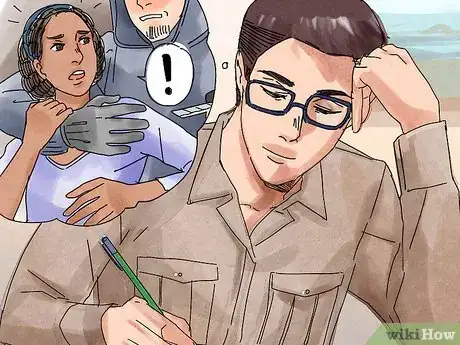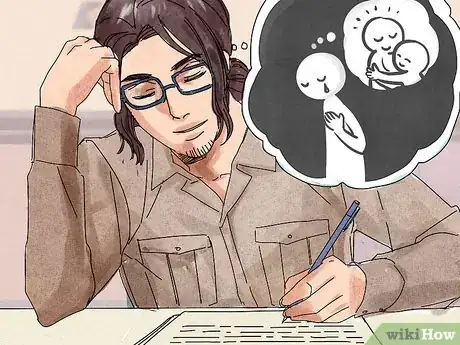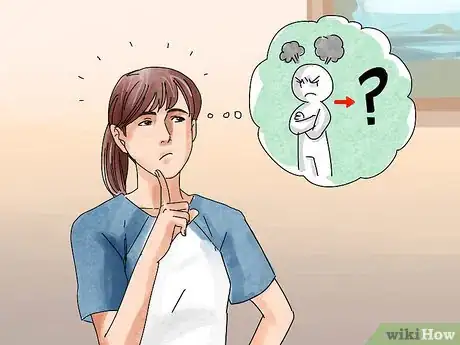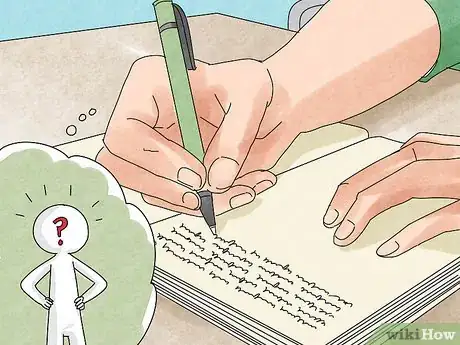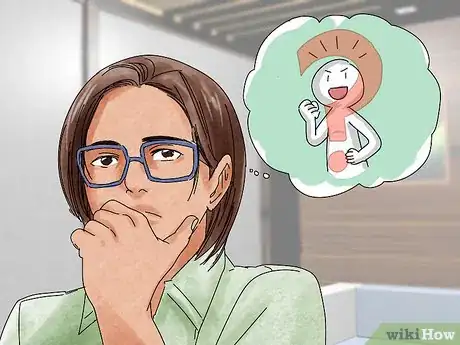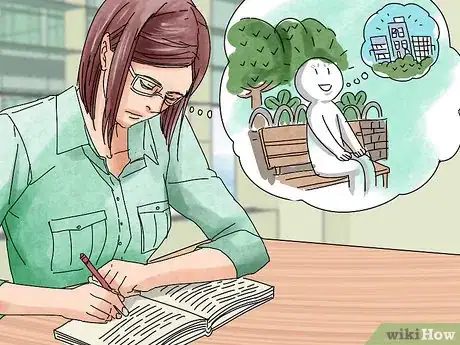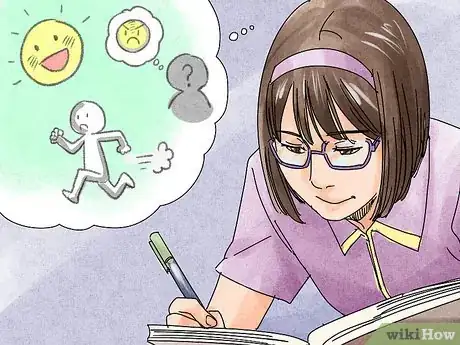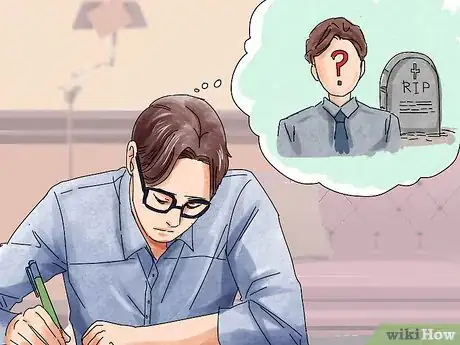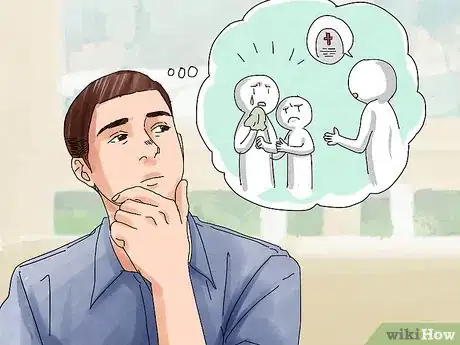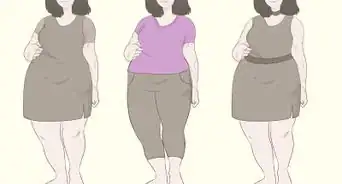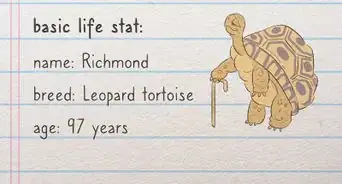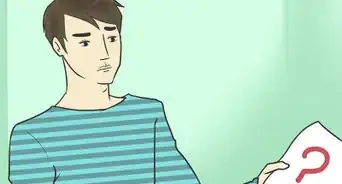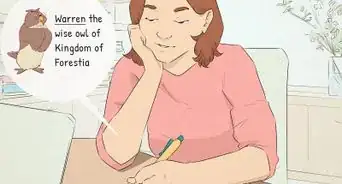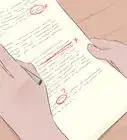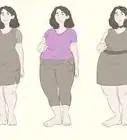X
wikiHow is a “wiki,” similar to Wikipedia, which means that many of our articles are co-written by multiple authors. To create this article, 40 people, some anonymous, worked to edit and improve it over time.
This article has been viewed 77,862 times.
Learn more...
Most stories written have a villain or antagonist of some sort as a main character in the plot. However, sometimes the villains are poorly written and their character feels weak. Avoid having weak and underdeveloped characters in your story by following these steps!
Steps
-
1Avoid unoriginal aspects or "villain" stereotypes. A villain that's seen in nearly every children's story will not be taken seriously if they are in your story. Think about fairy tales with villains in them - most of them were vain, jealous, cloaked in black, and had a certain appearance to them, with no backstory or development. If you are writing a comedy, however, it's okay to use recognized villainy for comical effect, such as the "evil laugh" and hooked nose.
-
2Give your character depth. You don't have to explain every aspect of their personality in great detail, but you should know your character inside out. Don't be afraid to develop your villain effectively - after all, a one-dimensional cardboard character is not so strong. No character is "pure good" or "pure evil", and your villain may truly believe that what they're doing is the right thing. Show the audience how they justify their actions.
- A good example of a villain with depth would be that as a teenager, their home had been destroyed by an alien UFO landing on the roof and had killed their family. Now that the villain is older, they're bitter and angry at the aliens, so they want to exterminate the aliens so that nothing like that can ever happen again.
- No one calls themselves a villain.[1] Consider how the villain justifies their own actions. What is their reasoning?
Advertisement -
3Make the villain's quest for revenge realistic. If your villain is hunting down the hero because they lost to the hero at a card game at third grade, something is wrong. Is it the villain's belief system, how they were bullied as a child, or that someone destroyed their family, city, or country? Alternatively, make your villain's turning point something original. Give your villain a mutated computer virus that bizarrely infects certain humans and makes them evil.
- Avoid giving your villain a mental disorder. This can increase stigma against people with psychiatric disabilities, who are on average no more violent or dangerous than the general public,[2] but far more likely to be victims of violence.[3]
-
4Make your villain intelligent. Many heroes get away because the villain loiters and talks for too long, enabling a quick escape. A strong villain wouldn't spend 15 minutes explaining to the hero how they're slowly and painfully going to torture them to death, they'd just shoot them on the spot.
- An exception to this could be if they have prevented the hero from moving in some manner - for example, tying them to a chair. However, it's unlikely that the villain would describe in detail how the hero is going to be tortured to death. A monologue about how much pain the hero has caused the villain would be more common.
-
5Decide if your villain is completely evil or not. Perhaps they are just mean, wanting power, or a bully. Be careful about this, if your story calls for a totally evil villain, go ahead, but if all your story needs is a bully, stop reading as you don't need to create strong villain and overdo it.
-
6Consider how your villain manages (or tries) to get away with what they do. It may seem as though any murderous villain is just a killer eventually brought to justice. Well, they are not. You will want your villain to be secretive. Look up any type of odd cult ritual or watch a documentary of any serial killer to find out how to make your villain secretive.
-
7Try having your villain toy with the police. To do keep everyone guessing, cook up a plan so winded no one will anticipate it! Let your villain move from place to place. You will want people to think your villain is a dangerous mastermind.
-
8Have an underchallenged villain TRY to get caught. If they are used to everything being easy, the villain may deliberately give their enemies a boost, so that they can be challenged. If it fails, the hero(es) will be even more hurt, humiliated, and disappointed.
- She leaves a clue to lead the police to her next victim see if they can catch her before she kills again.
- He lets the hero go, because he likes a challenge.
- A particularly manipulative villain may give the hero a better chance to beat them, then let the hero fail and be humiliated for missing such an easy shot.
-
9Let the reader get to know some of the victims before they are harmed. Let the reader see the goodness within the victims, so they mourn all the more when the victim is hurt or killed. The death of a complete stranger barely affects the reader; the death of a strong beloved character can be heartrending.
- For example, Officer Flores is particularly kind and good at his job, and encourages the hero when she feels down. The reader grows to love Officer Flores, only to be torn when the villain kills him.
- For example, the hero's autistic sister provides technical support, and cheers up the main characters with her positivity and endearing quirks. Later she is injured in an explosion and hospitalized, turning the hero's frustration to rage.
-
10Consider how the villain will respond to finally being caught. Would they fight to the death, or surrender and be taken to jail? Will they try to justify their actions, apologize, or say they'd do it all again?
-
11Decide whether to kill off your villain in the end. Maybe your villain will die grappling with heroes or law enforcement, or perhaps they survive.
- Some writers prefer graphic endings, such as the villain murdering two police officers before being shot in the head.
- Off-screen deaths are somewhat more family-friendly, such as the villain falling off a cliff, bridge, or building, without any description.
- Avoid killing off the villain if your story isn't dark.
- Consider redeeming your villain for a lighter, more positive ending.
-
12Consider others' reaction to the villain's death, if applicable. How do they react? What do their reactions say about their character?
- Are people happy about the death? What might that say about them?
- Does anyone wish the villain had survived, and why? What does that say about them?
Advertisement
Community Q&A
-
QuestionIs there a good way to use jealousy as a motivation without being stereotypical or cliche?
 Community AnswerJealousy is a very common reason to hate someone, so it's hard for that to not be a stereotypical motivation for a villain. If you really want to use jealousy, consider having the jealousy directed at someone other than the protagonist.
Community AnswerJealousy is a very common reason to hate someone, so it's hard for that to not be a stereotypical motivation for a villain. If you really want to use jealousy, consider having the jealousy directed at someone other than the protagonist. -
QuestionIs it possible to have a story where the villain wins in the end?
 Community AnswerYes, of course it is. Not all stories have to have a happy ending, so let your imagination run wild.
Community AnswerYes, of course it is. Not all stories have to have a happy ending, so let your imagination run wild. -
QuestionThe villain in my story is the uncle of the hero. Can I make the uncle jealous because the throne is given to the hero instead of him?
 WritingismypassionCommunity AnswerIt's a little cliche, but it could work. Try to put some kind of unique spin on this story.
WritingismypassionCommunity AnswerIt's a little cliche, but it could work. Try to put some kind of unique spin on this story.
Advertisement
References
- ↑ http://misslunarose.deviantart.com/art/Paper-Villains-306875874
- ↑ http://psychcentral.com/archives/violence.htm
- ↑ https://www.sciencedaily.com/releases/2013/03/130305200455.htm
- http://tvtropes.org/pmwiki/pmwiki.php/Main/EvilOverlordList
- http://misslunarose.deviantart.com/art/Paper-Villains-306875874
About This Article
Advertisement
